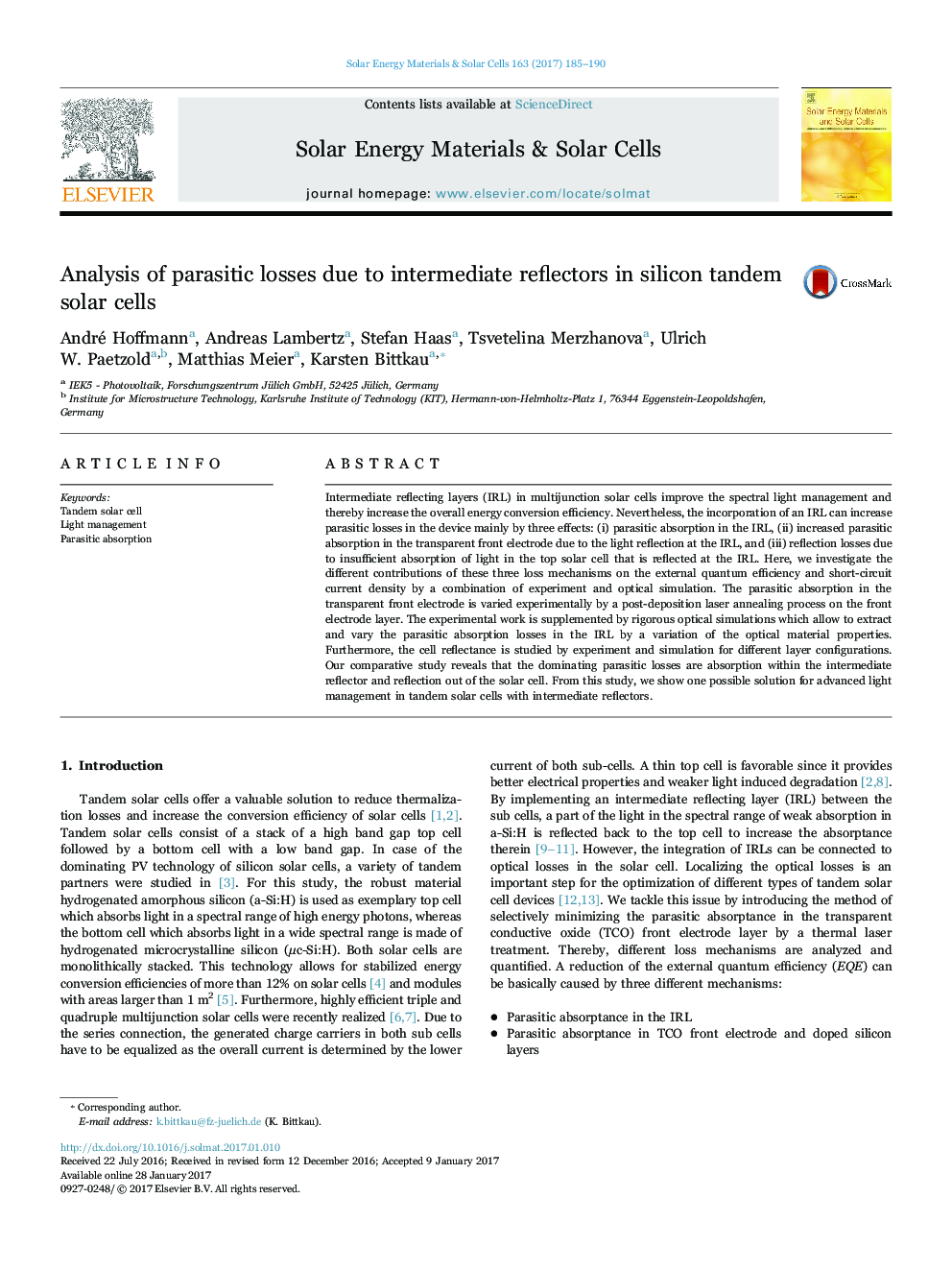| Article ID | Journal | Published Year | Pages | File Type |
|---|---|---|---|---|
| 6457206 | Solar Energy Materials and Solar Cells | 2017 | 6 Pages |
â¢Parasitic loss analysis in tandem solar cells with intermediate reflector.â¢Laser treatment of front TCO layer to reduce absorption losses.â¢Combination of experimental work and optical simulation to address the different loss mechanisms of real devices.
Intermediate reflecting layers (IRL) in multijunction solar cells improve the spectral light management and thereby increase the overall energy conversion efficiency. Nevertheless, the incorporation of an IRL can increase parasitic losses in the device mainly by three effects: (i) parasitic absorption in the IRL, (ii) increased parasitic absorption in the transparent front electrode due to the light reflection at the IRL, and (iii) reflection losses due to insufficient absorption of light in the top solar cell that is reflected at the IRL. Here, we investigate the different contributions of these three loss mechanisms on the external quantum efficiency and short-circuit current density by a combination of experiment and optical simulation. The parasitic absorption in the transparent front electrode is varied experimentally by a post-deposition laser annealing process on the front electrode layer. The experimental work is supplemented by rigorous optical simulations which allow to extract and vary the parasitic absorption losses in the IRL by a variation of the optical material properties. Furthermore, the cell reflectance is studied by experiment and simulation for different layer configurations. Our comparative study reveals that the dominating parasitic losses are absorption within the intermediate reflector and reflection out of the solar cell. From this study, we show one possible solution for advanced light management in tandem solar cells with intermediate reflectors.
